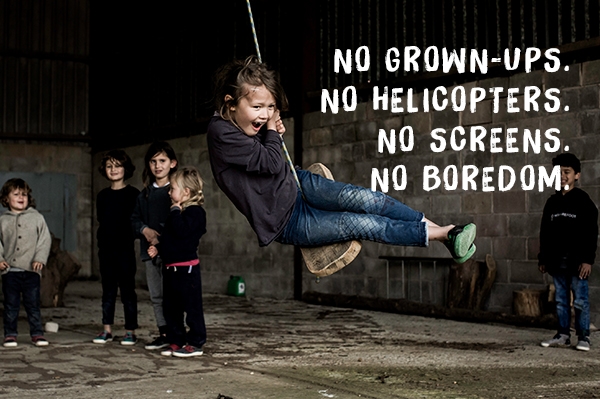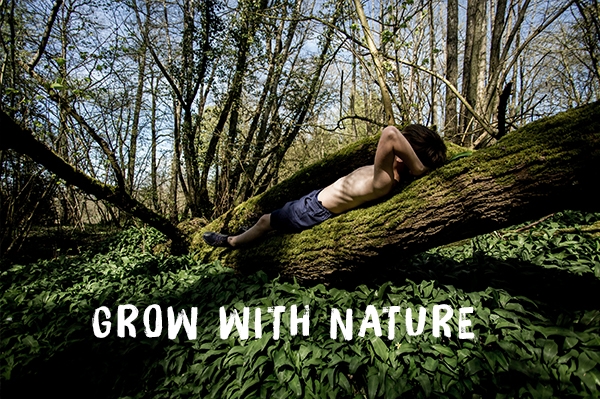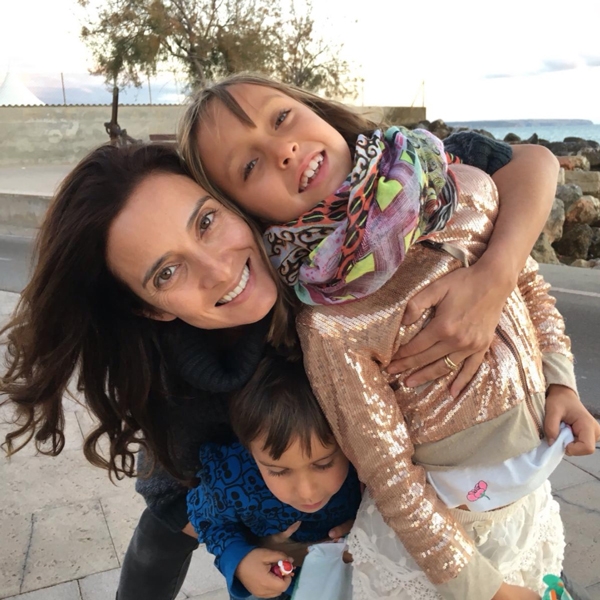1. PUSH THEM OUTDOORS – (NO MATTER HOW SMALL YOUR OUTDOOR SPACE)
With schools restricting play-time and play-space, and kids spending more time doing homework and sports activities, it’s harder and harder for kids to just play. And it’s exactly this free, outdoor play that they really need.
“Movement through active free play, especially outside, improves everything from creativity to academic success and emotional stability,” says Angela Hanscom, pediatric occupational therapist and author of “Balanced and Barefoot: How Unrestricted Outdoor Play Makes for Strong, Confident, and Capable Children”.
A friend of mine with a tiny London garden figured this one out: when her boys have had enough of homework, screens and toys, she pushes them into their jackets and out into their tiny London ‘garden’. At first, they complained, banged on the door, shouted at her to ‘free’ them. But when she returned an hour later they were engrossed in making a mini-Star Wars Jedi camp using bits of leaves and twigs.
So just let them get out and get on it with it, however, you can.


2. SEEK THE WILD (AND AVOID PLAYGROUNDS!)
The more nature you have around you, the luckier you are: use it. And, where possible, go barefoot. Bare feet grow stronger and more flexible to develop the arches of the feet as well as a strong big toe for balanced, skilful movement. Bare feet also send more sensory messages to growing, curious brains.
And if it’s hard to get out of your big smoke, find pockets of nature. Urban playgrounds are pits of parental paranoia. I once watched a smart-looking dad at the top of a rope monkey-bar yelling “come on, Graciella, put some effort into it” at his (sobbing) 6-year-old stuck half way up. The toddler area sandpit is no better. I'm done with the cooing chorus of, ‘share, Otis, share’ and, ‘don’t climb up the slide Bella’ or ‘wait your turn Oscar, gentle….’. There is so much more to urban parks: find the forgotten corners, open a book and let them go wild.


3. FIND SOME DANGER.
Risk is good for kids. Doing something on their own with a whiff of danger about it – from whittling with a knife, to lighting a fire or building a fort from large sticks and branches – boosts kids’ confidence and teaches team-work. We wouldn’t stop kids learning to ride bikes, right? It’s risky, but we all know it’s a valuable skill. Same goes for other so-called dangerous activities.
Through trying and failing and learning to trust their capabilities kids learn patience, perseverance and resilience, skills I certainly find I need to keep working on as an adult. So if you can’t get into the wild for some danger, bring it home. Let kids whittle with sticks collected from the park. Get them cooking. Give them a DIY project to get on with. Recently, I told my five-year-old son he needed to stay outside while I finished off some work, without being harangued for TV. When I heard the sound of a hammer coming from the treehouse, I knew he’d ‘borrowed’ some tools. I felt like shouting at him to put the hammer down, but I stopped myself. An hour later he came in to tell me he wanted to show me the shelf he built. Wonky and with some very dodgy nails sticking out, he balanced a small plant pot on his ‘shelf’. He was beaming. I’m glad I didn’t yell at him for nicking the hammer. Now he has his own place for ‘his’ tools.


4. LET THEM MOVE THEIR BODIES LIKE KIDS
School and park playgrounds are becoming ever more padded, and while this might placate worried parents: it’s no good for kids. While a parents’ instinct is to protect kids, when it comes to how they want to move their bodies, on a neurological level, we’re doing them more harm than good. To quote Angela Hanscom again, “Children with healthy neurological systems naturally seek out the sensory input they need on their own. They determine how much, how fast, and how high works for them. They do this without even thinking about it. If they are spinning in circles, it is because they need to. If they are jumping off a rock over and over, they are craving that sensory input. They are trying to organize their senses through practice and repetition.” So let them hang upside down from a tree branch, sled down hills in the snow, spin wildly in circles and get down on their hands and knees: it’s good for their bodies and their growing, curious brains.


5. DON’T FREAK OUT ABOUT INJURIES
I know how lucky I am to have two able-bodied children who do not have to spend time in hospitals because of medical conditions. I have endless admiration for the parents whose family situations are different, and much, much tougher than mine. And I know they would love for their medical problems to come in the form of cuts and bruises, scrapes and stings. So don’t freak out when kids get hurt: turns out it’s the kids who get hurt who are less likely to have accidents later on.
Kids who fall when they climb trees don’t get traumatized and wind up with vertigo – it’s the ones who don’t climb the trees at all who grown up too scared to even try.
And kids can teach each other: I adore my sons’ cautious friend who is a much better break on his excesses than I will ever be. And his parents were delighted the day my son finally helped him climb the big tree on his own. Way, way more valuable than me standing there yelling ‘stop’ at my son at the top of my lungs while my friend cajoles, ‘come on, give it a shot’ at hers. There are enough studies of childhood psychology now that show children who are hurt in a fall before the age of 9 are less likely to fear heights as teenagers.
AS TOLD BY KIKI KING : JOURNALIST AND BROADCASTER



